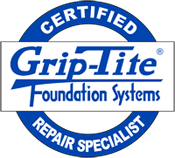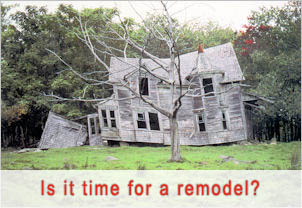
Typically, signs your concrete foundation needs to be repaired or replaced can present themselves in the form of cracks, uneven floors, or sticking doors. You could notice gaps between walls and floors, or water pooling around the foundation of your house. Sometimes windows no longer open easily. When you see these signs, minor issues can escalate and become much bigger if not given the proper care. Chipping or flaking concrete is are early warning sign as well. Being aware of these shifts keeps your home secure and stable. In the following sections, we’ll discuss what each sign means, why it matters, and what you can do to shield your home from larger damage.
Key Takeaways
- Keep an eye on cracks in your concrete foundation, particularly those greater than 6 millimeters in width, as they can be warning signs of significant structural issues.
- Pay attention to sloping floors, bowing walls, sticking doors, or a leaning chimney — these shifts can be signs of foundation movement and need immediate repair.
- Cracks or gaps around your windows, doors, walls, or trim can expose foundation settlement or shifting. Record these changes and seek expert advice if they intensify.
- These persistent moisture issues – basement dampness, crawlspace mold, or puddles by the base of your home – can be a threat to your foundation and should NOT be ignored.
- Watch for soil conditions like shrinkage, bad drainage, or tree roots that creep around your property.
- If you are experiencing several of the warning signs or persistent issues, it’s time for a professional inspection — and an opportunity to save the rest of your home from damage.
Decoding Foundation Cracks
Not all foundation cracks are created equal, and knowing the difference can help you determine when to take action. Typical varieties include vertical, horizontal, diagonal, stair-step, and hairline cracks, which can indicate serious foundation issues affecting your home’s structural integrity.
1. Vertical Cracks
Hairline cracks, both diagonally and straight up and down, are typical in concrete as it settles during the initial years after pouring. Most of these cracks are less than 1/8 inch wide and don’t signal major distress. However, if you notice a vertical crack wider than 6 mm, particularly by a door or window, it can indicate a serious foundation issue. Observe whether the crack is broader on one end or expands over time, and track it with photos every few months. If you notice moisture damage, move quickly — unattended, it can lead to extensive repairs.
2. Horizontal Cracks
Horizontal cracks, especially those wider than 6 mm, are a serious foundation issue. If you notice one along your basement wall or near the ground, it may indicate that the wall is experiencing excessive exterior pressure or even structural failure. Check if the crack aligns with other common signs, such as bulging walls or moving floors. If you observe multiple signs—like water seepage or sticking doors—it’s crucial to call a foundation repair contractor. These cracks often necessitate emergency treatment and can lead to significant repair costs if left unaddressed.
3. Diagonal Cracks
Diagonal cracks resemble a slash, running at an angle. Upward cracks commonly exhibit foundation settlement, whereas downward cracks can indicate that the soil is pushing up beneath a specific section of the house. If the crack is wider than 6 mm or longer than 30 cm, it must be inspected for potential foundation issues. Look for cracks that begin at window or door corners, as these suggest uneven movement. Monitor any shifting, because rapid expansion can signal more profound underlying problems.
4. Stair-Step Cracks
Stair-step cracks in brick or block walls, which trace the mortar lines, can be a common sign of foundation issues. If you see these cracks, particularly large or rapidly growing ones, it may indicate foundation movement. It’s essential to contact a foundation repair contractor if you notice changes.
Notice Structural Shifts
Recognizing foundation problems early can save homeowners both money and concern. Structural shifts occur for a variety of reasons—foundation settling, erosion, or harsh weather. The signs aren’t always showy, but they count. Watch for common signs in floors, walls, doors, and chimneys.
Sloping Floors
A floor that slopes to one side or has an uneven quality could indicate serious foundation issues. Tossing a spherical object, like a marble, onto the ground can reveal a slope; if it rolls to a single location, your foundation may be unstable. While small cracks in a tile or two may be due to dropped items, cracks wider than 6mm or those that run across multiple tiles suggest potential foundation damage. It’s crucial not to ignore floors that slope steeply or have broad, spreading cracks, as these could be signs of foundation movement.
If you observe uneven floors alongside other structural red flags, such as wall cracks or sticking doors, it indicates a broader foundation problem. Document any structural shifts in the floor, and if the slope worsens, contact a foundation repair contractor for a thorough foundation inspection.
Bowing Walls
Doors and windows that stick as well as walls that bow or bulge inward indicate actual stress in your home’s structure. Even a slight bow can indicate excessive soil pressure or water-damaged foundation beneath. Introduce a straight edge or level and see how much the wall bows. If the bowing is over 13 mm, your home is in greater danger.
Discover whether soil pressure or water leaks are responsible. When bowing walls appear, along with other symptoms like sloping floors and large cracks, have a foundation specialist inspect them immediately.
Sticking Doors
One sticking door may be a minor repair, perhaps caused by a shift in humidity. If a few doors or windows begin to stick, or if you see new cracks in walls or ceilings, your foundation could be shifting. Try other rooms for the problem.
Observe if the sticking increases or other issues arise as well. Just to keep better track, write down what you notice.
Leaning Chimney
A chimney leaning away from your house is an aggressive indicator of foundation shifting. See how much it leans. Even a couple of centimeters can be serious. Check the base of the chimney for any gaps or cracks.
If you spot a lean, dial a foundation expert. Waiting can result in larger threats.

Identify Gaps And Separations
Gaps and separations in your concrete foundations can indicate serious foundation issues. These shifts may manifest as cracks around windows, doors, and walls. Regular foundation inspections allow homeowners to catch foundation settling early and address repair costs before larger problems arise.
Window Gaps
Gaps around windows are quick to spot and quantify. When the gap measures more than a few millimeters, it could indicate that a foundation issue under your house is settling or shifting. In certain areas, such as expansive clays, these separations can appear quickly following wet or dry periods. If you find your windows sticking or won’t close correctly, this can indicate foundation movement. With a ruler, keep tabs on the size as it progresses. If you notice the gap expanding or new cracks popping up around your window frame, it’s time to dial up a foundation repair contractor for a second opinion.
Door Gaps
Gaps by doors may indicate a shifting or settling foundation, which can lead to serious foundation issues. When the door rubs, sticks, or leaves a gap at the top or bottom, the frame could be out of alignment, raising concerns about the structural integrity of your home. These gaps imply that your home’s security is in jeopardy because the door might not latch properly. Monitor these gaps for weeks or months, and if you notice cracks on a nearby wall or other signs of foundation movement, have a professional conduct a foundation inspection.
Wall Gaps
Wall gaps between the wall and floor or baseboard can indicate that your foundation is shifting, potentially leading to serious foundation issues. Occasionally, you’ll find hairline or stairstep cracks that warrant a closer foundation inspection. Gaps that expand or appear in multiple rooms can’t be overlooked, as they may be caused by soil shrinkage, erosion, or even seismic activity if you’re in a high-risk zone. Note where these gaps are and how wide they become, as this tracks whether the issue is expanding and helps the repair crew know where to begin.
Trim Gaps
Trim gaps can appear as little separations where your wall and trim come together. A gap that widens or appears in new locations could indicate a serious foundation issue or foundation movement. Observe these areas and note differences, as extensive repairs may be necessary if gaps continue to spread.
Investigate Moisture Problems
Moisture is one of the signature signs that can indicate serious foundation issues. Many foundation problems begin as minor, yet water can lead to extensive repairs quickly. If you notice any signs, such as ceiling cracks or basement wall deterioration, you need to investigate them as soon as possible to avoid costly foundation repair.
Basement Dampness
Damp basement walls or floors usually indicate that water is entering, which can lead to serious foundation issues. Look out for indications such as ‘weeping’ down the walls, a musty odor, or quickly peeling paint, as these can all indicate leaks or groundwater seeping through cracks. If you notice the issue intensifying after rain, make specific observations regarding when and where this takes place. Record these changes, including dates and photos of any ceiling cracks or dampness. This documentation will assist you or an expert in assessing whether the situation is worsening. If your remedies—like running a dehumidifier or caulking visible cracks—don’t solve the issue, then it’s time to bring in a foundation repair contractor for a comprehensive foundation inspection.
Crawlspace Mold
If you have a crawl space, mold can be a warning sign of potential foundation problems. Mold thrives in areas with excessive moisture, which can lead to significant foundation damage over time. The presence of mold on beams, joists, or floorboards may indicate that water is pooling or that the air humidity is too high. Investigate moisture problems to determine the cause, such as a leaking pipe or rainwater intrusion. If mold persists or spreads, it could signify a serious foundation issue that threatens your home’s structural integrity. In such cases, it’s wise to call in a foundation repair contractor for assistance.
Puddles Near Base
Puddles near your home’s foundation are not normal. Water should forever run away from your house. If you notice puddles after a rain, determine their frequency and size. A minor puddle here and there doesn’t feel like much, but if it occurs frequently or increases, you may have a drainage problem. Or even worse, things like poor grading or blocked drains, which allow water to sit near the foundation, accelerate damage. Photograph and record observations of when and where you notice puddles. This information aids you in identifying trends and determining if you should adjust your drainage or seek professional assistance.
The Soil’s Silent Story
Soil beneath your foundation contains crucial secrets to the well-being and longevity of your home. Its composition and capacity — from mineral content to compaction — can spell the difference between a secure domicile and a vulnerable one. Types of clay — smectite, bentonite — all have their tales to weave — soils that expand or contract in the presence of water, silently moving the earth beneath you. These changes can lead to serious foundation issues, manifesting in the soil before you notice significant fissures in your home. Understanding what’s beneath enables you to make intelligent decisions to maintain your foundation’s stability.
Soil Shrinkage
Soil shrinkage is a canary in the coal mine when it comes to foundation problems. When soil dries, especially if it’s high in expansive clays like montmorillonite, it shrinks and recedes from the foundation. You may notice cracks between the soil and your home’s slab or basement walls, which can lead to serious foundation issues over time. This uneven support can cause your foundation to settle or tilt.
To understand how much soil is shrinking and how quickly, keep an eye out for deeper earth fissures after extended dry or drought conditions. The usual suspects are drought and poor drainage. Regular maintenance and monitoring can help detect trends that forewarn of larger potential issues.
Poor Drainage
Among the leading causes of foundation failure is poor drainage. Water pooling near your foundation indicates the soil cannot absorb any more moisture, leading to swelling in clay-rich soils and erosion in looser soils. Watch for post-rain puddles, soggy patches, or soil washing away from your house’s foundation.
Make sure your drains – be it gutters or ground slopes – are working. Sometimes, you have to regrade the land or add French drains to push water away. Keeping the soil dry and well-manicured will save your foundation from shifting or sinking.
Tree Root Intrusion
Tree roots will do real damage if trees are too close. Roots extend beneath the surface, seeking moisture, and they can buck up against or slide beneath your foundation. Cracks, tilting, or new gaps in walls or floors can be attributed to root growth.
Have an expert check how close big trees are to your foundation. They can assist in decision making between root barriers, pruning, or even removal if the risk is significant.
Poor Compaction
Soil that’s not tightly packed during construction can compact unevenly. If you notice areas of your home settling faster than others, it’s an indication that the soil beneath isn’t stable enough.
Look at your records or request a soil test to determine if the soil was packed correctly at the time of the house’s construction. Watch for new cracks or uneven floors.
When To Call Professionals
Knowing when to call in a foundation repair contractor keeps your house or building secure. Certain foundation problems can be identified at an early stage, while others require a professional touch to get to the source. If you notice cracks in your concrete that are widening or exceed 6 mm (1/4 inch) in width, it’s a great indication that it’s time to call the professionals. Even a 1/4-inch gap around your window frames or exterior doors can indicate that your foundation is moving and warrants professional attention. Cracks aren’t created equal; small hairline cracks can occur as concrete cures, but long or wide cracks, or those running laterally along brick or block walls, can indicate more serious foundation issues. If you notice cracks that are more than 15 mm (.6 inches), this is grave. These cracks can indicate subsurface movement or structural shifts. When floors in your home or office begin to slope, dip, or become bouncy, that’s another red flag. Uneven or sagging floors could indicate that the foundation is shifting or settling. If doors or windows begin to stick or you notice gaps that weren’t there before, this typically originates from a shifting foundation. Upheaval, or the slab moving up, can similarly cause cracks and uneven floors.
Water is another major issue that contributes to foundation damage. Even shallow pools of standing water—roughly 3 mm (1/8 inch)—around your foundation can seep into the earth and erode its integrity. Excess humidity or leaks exacerbate harm, causing minor issues to escalate exponentially. If you notice any indicators of water damage, such as damp areas or mold in proximity to the foundation, it’s prudent to arrange for a free foundation inspection.
If you spot more than one of these common signs at the same time, don’t wait. Most companies offer a free or low-cost evaluation. These checks can spot hidden risks before they get worse or cost more to fix. Even if you are unsure, having a pro take a look can give peace of mind and save money long-term.
Conclusion
Noticing cracks in your floors, sticking doors, or wall gaps can say a lot about what’s happening beneath you. Water stains or musty odors indicate leaks that damage more than aesthetics. Shifting soil beneath your house can fracture your slab. Things like this are an indication that your house needs some attention. Speedy intervention keeps minor issues inexpensive and simple to repair. You avoid the stress of major repairs down the road. Curious if you’re place is in jeopardy! Watch for these warning signs, inspect your area, and consult an expert if you notice them. Keep your home safe—be on the lookout, stay vigilant, and call if you see the signs.
Noticing cracks, sloping floors, or moisture around your home? Don’t wait for small issues to become major repairs. Contact Mares & Dow Construction & Skylights Inc. today for a professional foundation inspection you can trust. Your home’s safety starts from the ground up — let us help you protect it.
Frequently Asked Questions
1. What Are The Early Signs That My Concrete Foundation Needs Repair?
Be on the lookout for cracks in walls or floors, ceiling cracks, doors that stick, or uneven floors. These little signs are often the canary in the coal mine of serious foundation issues. Catching foundation problems early can save you a fortune in repairs down the road.
2. How Can I Tell If A Foundation Crack Is Serious?
Wide, expanding, or horizontal cracks in your home’s foundation often indicate serious foundation issues. If you spot these, move fast to prevent structural failure!
3. Should I Worry About Gaps Between Walls And Floors?
Yes. Walls, ceilings, or floors pulling apart are warning signs of foundation movement, indicating your foundation requires inspection for potential issues.
4. What Does Excess Moisture Around My Foundation Mean?
Water stains or mold near your foundation can indicate leaks or drainage issues, which may lead to serious foundation issues like foundation settlement if left unattended.
5. Why Does The Soil Around My Home Matter For The Foundation?
Shrinking or swelling soil, along with inadequate drainage, can lead to serious foundation issues. Homeowners should watch for soil shifts, especially after torrential rain or extended drought.
6. When Should I Call A Foundation Repair Professional?
Call a pro for large cracks, uneven floors, or major structural shifts. The professionals can evaluate the harm and suggest the most effective remedy.
7. Can Foundation Issues Lower My Property Value?
Yes, unresolved foundation problems can decrease the value of your property and make it hard to sell, so tackling these foundation issues early saves your investment.
Build A Strong Foundation With Mares & Dow Construction & Skylights – Concrete Expertise You Can Count On
A solid foundation is the backbone of any structure. At Mares & Dow Construction & Skylights, we bring over 40 years of construction experience to every concrete foundation project, delivering long-lasting, high-quality results that support your home or addition for decades to come.
Whether you’re building a new home, planning an addition, or replacing an aging foundation, our team specializes in residential concrete foundation services tailored to meet your project’s structural needs and design goals.
Why Choose Mares & Dow For Your Concrete Foundation?
• Precision-formed foundations built for strength and stability
• Seamless integration with custom home builds, remodels, or ADUs
• Expert site preparation and grading to prevent future settling or cracking
• Timely project delivery with clear communication from start to finish
Proudly serving Contra Costa County, including Alamo, Danville, Orinda, Martinez, and San Ramon, Mares & Dow Construction & Skylights is your trusted partner for dependable, code-compliant foundation work.
Contact Mares & Dow Construction & Skylights today for a free, no-obligation estimate, and start your project on solid ground.
Disclaimer
The materials available on this website are for informational and educational purposes only and are not intended to provide construction, legal, or professional advice. You should consult with a qualified general contractor or industry professional for advice concerning any specific construction project, remodeling plan, or structural concern. Do not act or refrain from acting based on any content included on this site without seeking appropriate professional guidance. The information presented on this website may not reflect the most current building codes, regulations, or industry best practices. No action should be taken in reliance on the information on this website. We disclaim all liability for actions taken or not taken based on any or all of the contents of this site to the fullest extent permitted by law.











 based on
based on 

